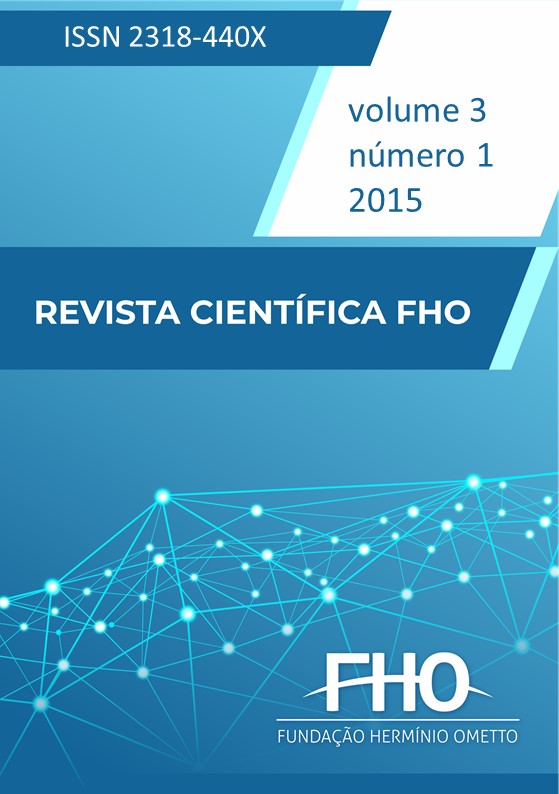Abstract
The use of plants with therapeutic purposes has been described since 2.800 before Christ, and in the latest years, there has been an increase on its consumption, replacing the use of certain allopathic medicine. This increase is due to benefits to the body in association with lack of side effects in addition to ease of preparation and low-cost. Allium sativum (garlic) has been used by popular culture in order to prevent and treat several diseases. Scientific studies proved that garlic extract stimulates the immune system to generate a proinflammatory action as from the proliferation and amplification of the response through T and NK cells, aside from the proinflammatory cytokine production without hepatotoxicity. Scientific evidence about the benefits in association with low toxicity of garlic and with immune system allow the usage of this vegetable on treatment and prevention of different inflammatory
processes.
References
ALGRANTI, L. M. Saberes culinários e a botica doméstica: beberagens, elixires e mezinhas no império português (séculos XVI-XVIII). Saeculum: Revista de História, João Pessoa, v. 2, n. 27, p. 13-30, jul./dez. 2012.
ANVISA – AGÊNCIA NACIONAL DE VIGILÂNCIA SANITÁRIA. O que devemos saber sobre medicamentos. Brasília: ANVISA, 2010. 104 p. Disponível em: http://portal.anvisa.gov.br/wps/wcm/connect/92aa8c00474586ea9089d43fbc4c6735/Cartilha%2BBAIXA%2Brevis%C3%A3o%2B24_08.pdfMOD=AJPERES. Acesso em: 24 ago. 2015.
APOLINÁRIO, A. C. et al. Allium sativum L. como agente terapêutico para diversas patologias: uma revisão. Biofar: Revista de Biologia e Farmácia, Paraíba, v. 2, n. 1, p. 1-6, jul. 2008. Disponível em: http://sites.uepb.edu.br/biofar/download/v3n1-2008/ALLIUM_SATIVUM.pdf. Acesso em: 11 mar. 2015.
ARNOUS, A. H.; SANTOS, A. S.; BEINNER, R. P. C. Plantas medicinais de uso caseiro: conhecimento popular e interesse por cultivo comunitário. Revista Espaço para Saúde, v. 6, n. 2, p. 1-6, 2005.
BAYAN, L.; KOULIVAND, P. H.; GORJI, A. Garlic: a review of potential therapeutic effects. Avicenna Journal of Phytomedicine, Münster, v. 4, n. 1, p. 1-14, jan./fev. 2014. Disponível em: http://www.ncbi.nlm.nih.gov/pmc/articles/PMC4103721/pdf/ajp-4-001.pdf. Acesso em: 26 fev. 2015.
BHATTACHARYYA, M. et al. Systemic production of IFN-alpha by garlic (Allium sativum) in humans. Journal of Interferon & Citokine Research, Calcutá, v. 27, n. 5, p. 377-382, maio 2007.
CURY, L. Uso de plantas medicinais da tradição popular é regulamentado. ANVISA, Brasil, 11 mar. 2010. Disponível em: http://portal.anvisa.gov.br/wps/content/anvisa+portal/anvisa/sala+de+imprensa/menu+-+noticias+anos/2010+noticias/uso+de+plantas+medicinais+da+tradicao+popular+e+regulamentado. Acesso em: 11 mar. 2014.
FALLAH-ROSTAMI, F. et al. Immunomodulatory Activity of Aged Garlic Extract Against Implanted Fibrosarcoma Tumor in Mice. North American Journal of Medical Scienses. Tehran, v. 5, n. 3, p. 207-212, mar. 2013. Disponível em: http://www.ncbi.nlm.nih.gov/pmc/articles/PMC3632025/. Acesso em: 8 abr. 2015.
FENG, Y. et al. Allicin enhances host proinflammatory immune responses and protects against acute murine malaria infection. Malaria Journal, Liverpool, v. 11, n. 268, p. 1-9, ago. 2012. Disponível em: http://www.malariajournal.com/content/pdf/1475-2875-11-268.pdf. Acesso em: 24 ago. 2015.
FRANÇA, I. S. X. de. et al. Medicina Popular: Benefícios e Malefícios das Plantas Medicinais. Revista Brasileira de Enfermagem - REBEN, Brasília, v. 61, n. 2, p. 201-208, abr. 2008. Disponível em: http://www.redalyc.org/pdf/2670/267019607010.pdf. Acesso em: 24 ago. 2015.
HASSAN, Z. M. et al. Imunomodulatory affect of R10 fraction of garlic extract on natural killer activity. International Immunopharmacology, Tehran, v. 3, n. 10-11, 2003, p. 1.483-1.489, jun. 2003. Disponível em: http://www.nutraxin.com.tr/pdf/AlliumSativum/Allium_05.pdf. Acesso em: 24 ago. 2015.
KATZUNG, B. G. Farmacologia Básica e Clínica. 8. ed. Rio de Janeiro: Guanabara Koogan, 2003.
MADRIGAL-SANTILLÁN, E. et al. Review of natural products with hepatoprotective effects. World Journal of Gastroenterologist. Pleasanton, v. 20, n. 40, p. 14787-14804, out. 2014. Disponível em: http://www.wjgnet.com/1007-9327/pdf/v20/i40/14787.pdf. Acesso em: 24 ago. 2015.
MAJEWSKI, M. Allium sativum: facts and myths regarding human health. Rocz Panstw Zakl Hig, Olsztyn, v. 65, n. 1, p. 1-8, 2014. Disponível em: file:///C:/Users/f2438/Downloads/01-Rocznik_PZH_1-2014%20(1).pdf. Acesso em: 24 ago. 2015.
MIRABEAU, T. Y.; SAMSON, E. S. Effect of Allium cepa and Allium sativum on some immunological cells in rats. African Journal Tradit Complement Altern Med, Okada, v. 9, n. 3, p. 374-379, abr. 2012.
MOTA, J. H. et al. Análise da evolução da produção e relação risco-retorno para a cultura do alho, no Brasil e regiões (1991 a 2000). Horticultura Brasileira, v. 23, n. 2, p. 238-241, abr./jun. 2005. Disponível em: http://www.scielo.br/pdf/%0D/hb/v23n2/25060.pdf. Acesso em: 24 ago. 2015.
NANTZ, M. P. et al. Supplementation with aged garlic extract improves both NK and γδ-T cell function and reduces the severity of cold and flu symptoms: a randomized, double-blind, placebo-controlled nutrition intervention. Clinical Nutrition, Florida, v. 31, n. 3, p. 337-344, dez. 2011.
QUINTAES, K. D. Alho, nutrição e saúde. Revista NutriWeb, v. 3, n. 2, 2001. Disponível em: http://www.nutriweb.org.br/n0302/alho.htm. Acesso em: 26 jul. 2014.
RIVLIN, R. S. Historical perspective on the use of garlic. The Journal of Nutrition, v. 131, n. 3, p. p. 951–954, 2001. Disponível em: http://jn.nutrition.org/content/131/3/951S.abstract. Acesso em: 26 ago. 2015.
SAMSON, E. S. et al. Haematological and Hepatotoxic Potential of Onion (Allium cepa) and Garlic (Allium sativum) Extracts in Rats. European Journal of Medicinal Plants, Edo State, v. 2, n. 4, p. 290-307, out. 2012.
SOUZA, F. S.; MACIEL, C. C. S. Produtos fitoterápicos e a necessidade de um controle de qualidade microbiológico. VEREDAS FAVIP – Revista Eletrônica de Ciências, Pernambuco, v. 3, n. 2, p. 23-30, jul./dez. 2010. Disponível em: http://veredas.favip.edu.br/ojs/index.php/veredas1/article/view/94/207. Acesso em: 26 fev. 2015.
TANG, Z. et al. The preventing function of garlic on experimental oral precancer and its effect on natural killer cells, T-lymphocytes and interleukin-2. Bulletin of Human Medical University, Changsha, v. 22, n. 3, p. 246-248, 1997.
TOMAZZONI, M. I.; NEGRELLE, R. R. B.; CENTA, M. L. Fitoterapia popular: a busca instrumental enquanto prática terapêutica. Texto Contexto Enfermagem, Florianópolis, v. 15, n. 1, p. 115-121, 2006.

This work is licensed under a Creative Commons Attribution-NonCommercial 4.0 International License.
Copyright (c) 2015 Ana Flávia Quiarato Lozano; Leonardo Bagne; Daisy Cristina Borges da Hora
